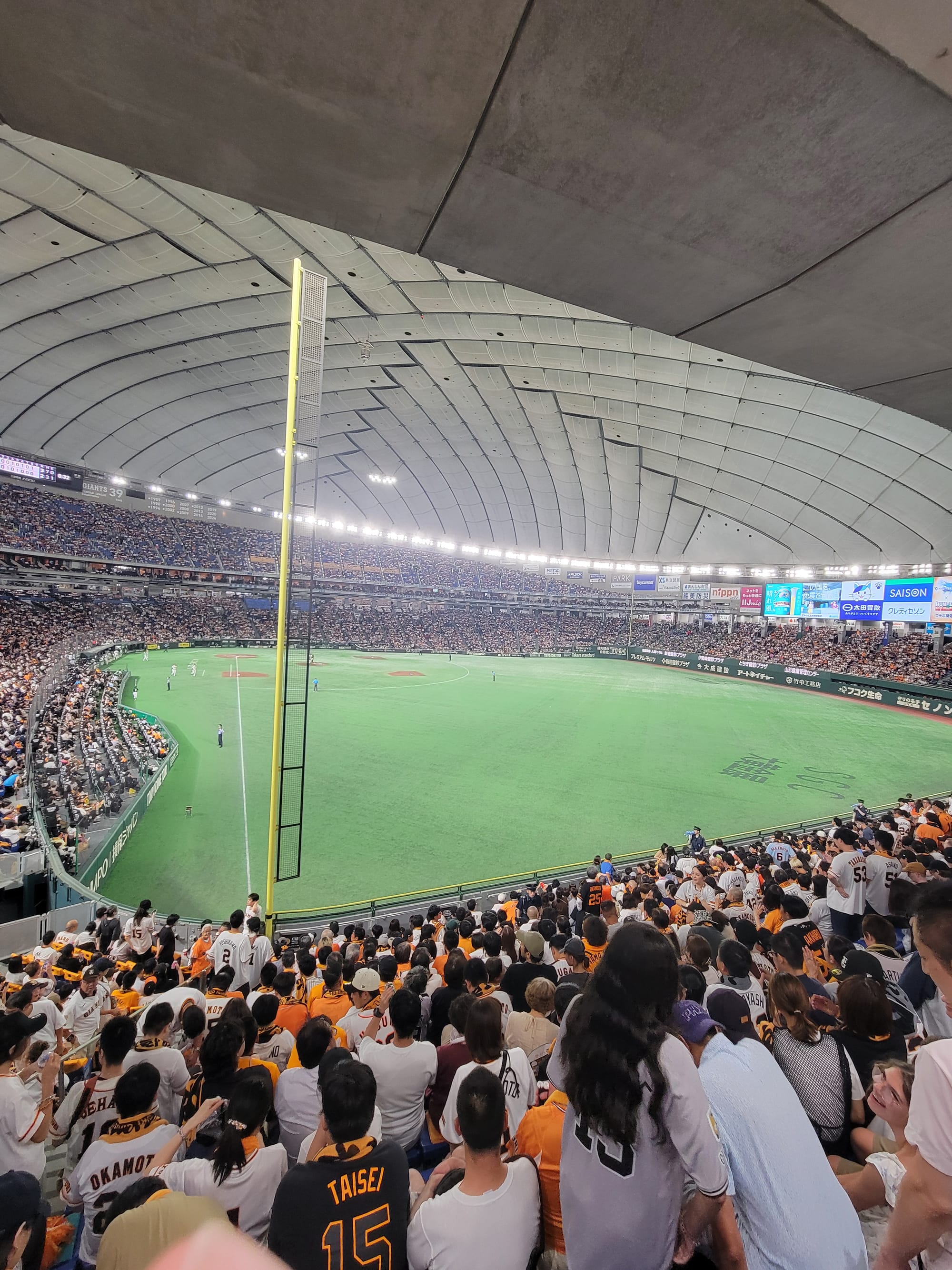Japan is not Called Japan, in Japan (Nippon)
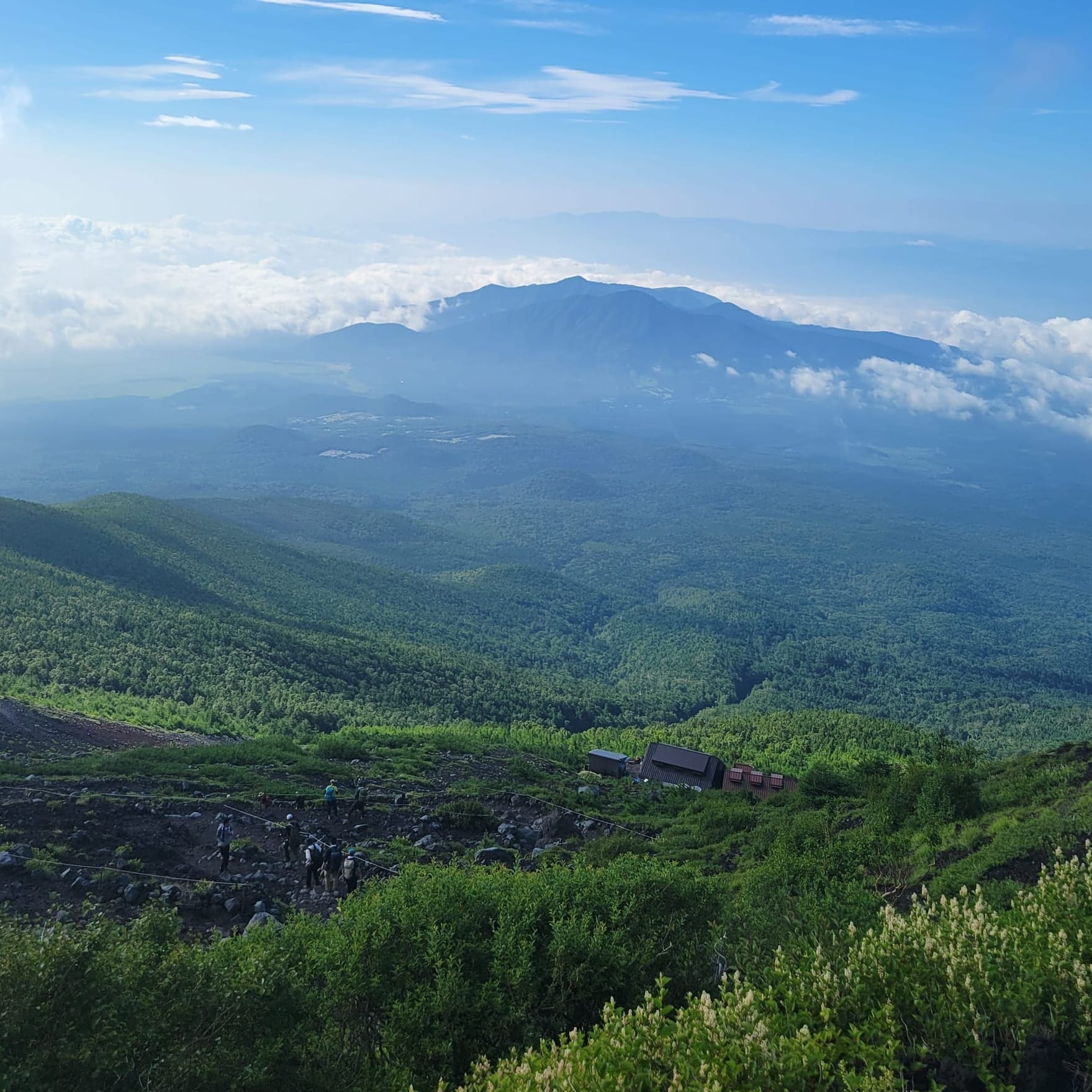
Hello! Long-ish time no hear from me. This installment will be a little different from my norm. I've spent the last two weeks visiting Japan and living life away from my racquets and laptop. My goal was to see as much as I could in 12 days and gather fun stories along the way. Getting sunburnt and covered in mosquito bites, missing activities due to elevator waits, and being separated in Tokyo's metro system were not at the top of this to-do list. But no great adventure is without great obstacles.
Okinawa
Robert and I (Robert is my best friend and was my travel companion for this trip) began our journey South of Japan's mainland on one of the Japanese Archipelago islands, Okinawa. The weather was nice and sticky, with rain moving in every few hours to keep the ground perpetually wet. We landed early that morning with two of Robert's college friends and quickly hit the public beach's sandy shores. In an attempt to partially absolve myself of blame for this next part, I'd like to preface this story with the fact that I haven't gone swimming for an extended period (been in water for longer than 30 minutes at a time) in many years. Unfortunately for me, the tropical Okinawan sun did not care that my shoulders were pale and unaccustomed to its UV rays. It wasn't until we returned to our hotel and showered for the evening that we realized the paltry amount of sunscreen we had sprayed on earlier in the day did little to protect us.
Itchy, burning, but thankfully not blistering, we spent the second day traveling to the northern part of the island. Much of Okinawa's industrialization is on the southern side of the island, and we wanted to see natural attractions like Cape Hedo.
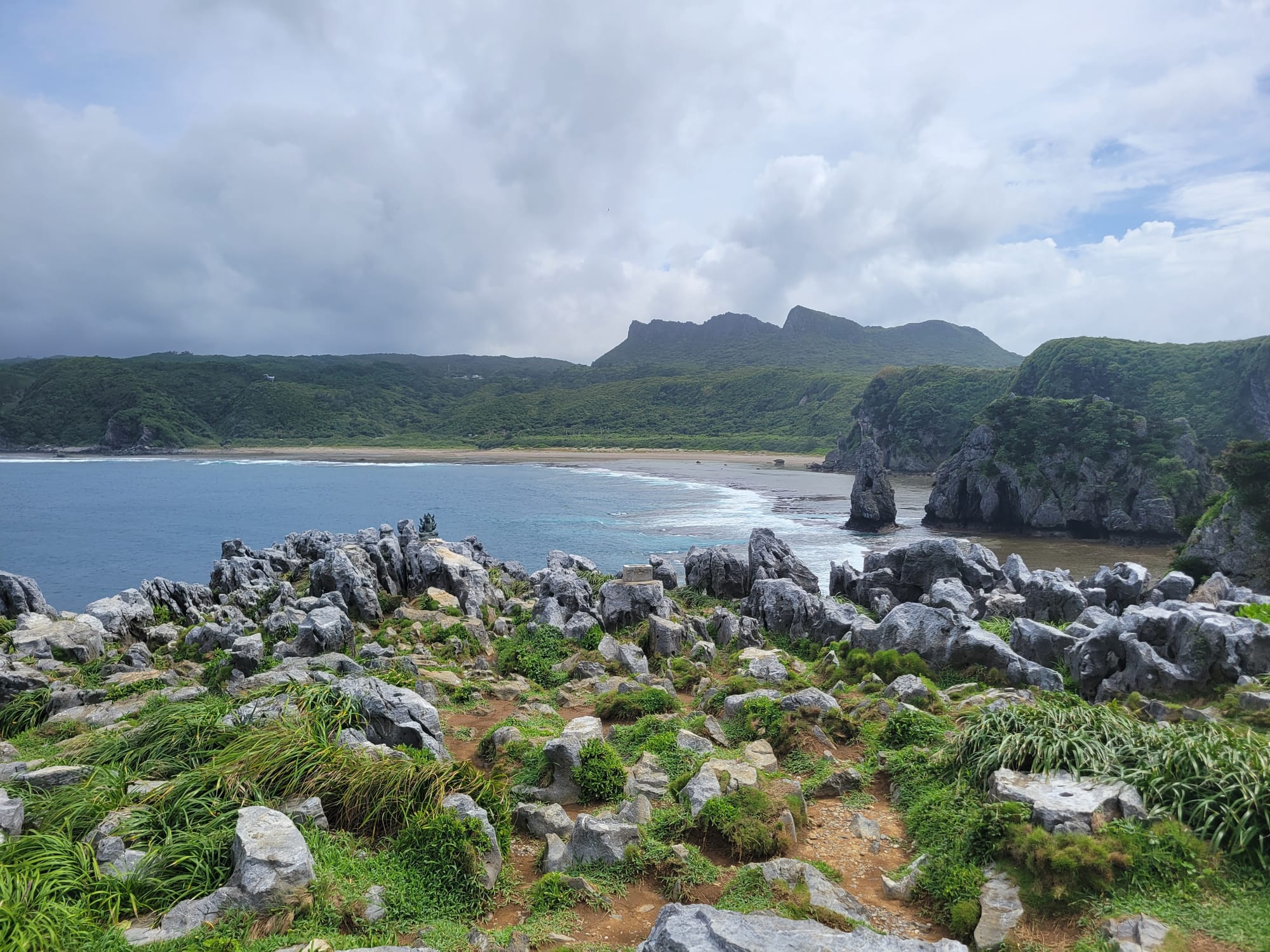
The four of us had a nice visit to the cape and then set off to see local wildlife at a nearby observatory spot when disaster struck. BANG, rumble, psssss........... I knew from the sound. We were in rural Okinawa, on the side of a cliff, going down a one-lane road, with a blown tire. I think all four of us in the vehicle had the same thought, "What are we going to do if there isn't a spare?" By a stroke of luck that I hadn't experienced thus far on the trip, our rental came equipped with a spare tire and the tools to change it. Five minutes later, luck resumed course, and a downpour came to soak our clothes and send the local mosquito population into a frenzy. Covered in welts and not an inch of dry clothing, we finally finish changing the tire. At least it wasn't cold.
After going to multiple convenience stores buying dry clothes, we stumbled across the most beautiful beach I've ever seen. Unlike the beach from the day before, crowded and murky, the water was crystal clear, and the sand deserted. We walked along the water, basking in the most peace we'd had since arriving in the Land of the Rising Sun. If days one and two had gone so well, I couldn't imagine what day three had in store for us!
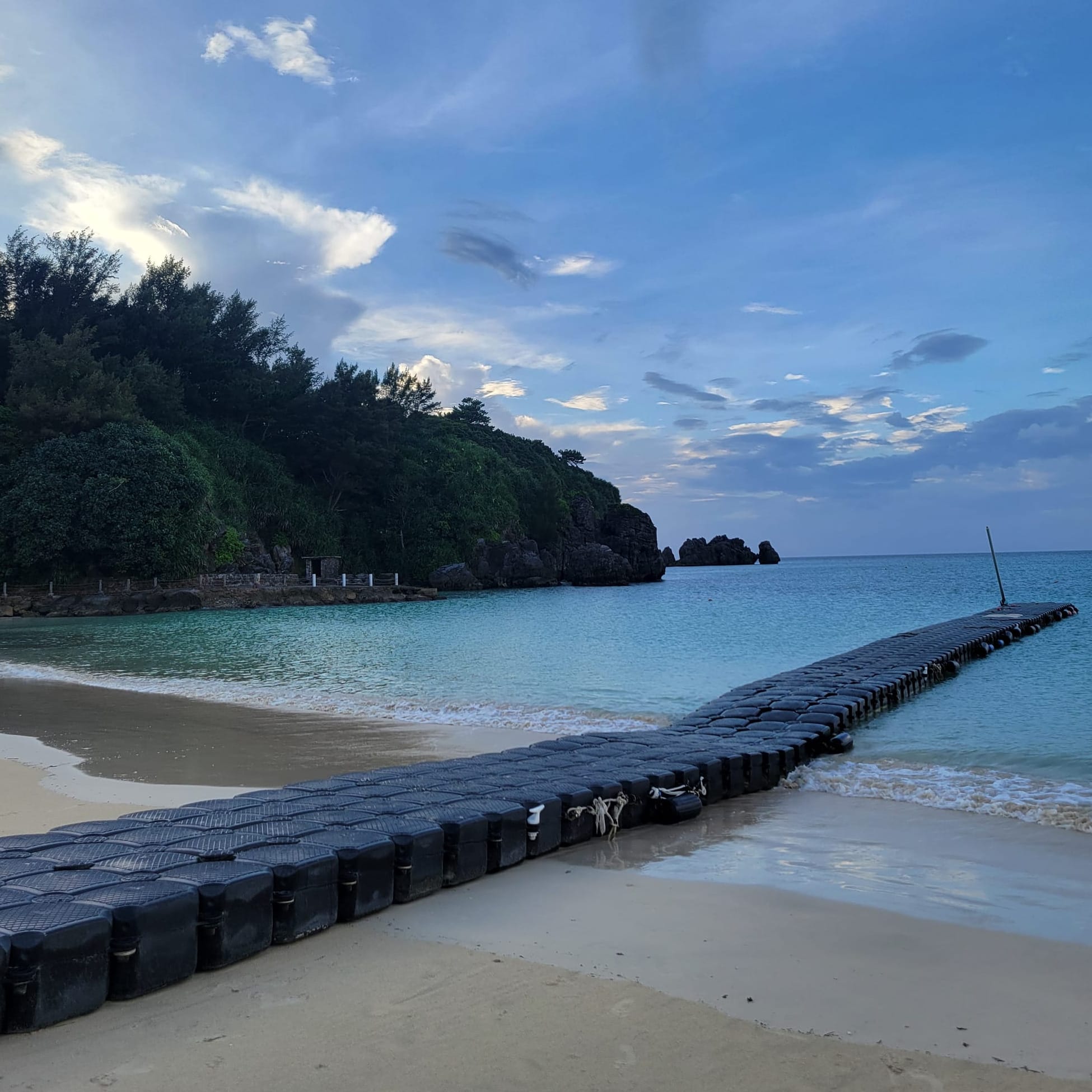
Shuri Castle was the main castle of Okinawa between the 15th and 19th centuries. In October 2019, it tragically caught fire, and most of the castle's main buildings were lost. The castle has been under restoration since, but isn't expected to finish until 2026. We decided to go ahead and visit to see everything that remained, and it gave us a chance to try out the subway system for the first time. A very pleasant above-ground subway (train?) ride later, and we were dropped off right by the castle, a great first experience that surely won't be spoiled later. As we stood atop Shuri Castle and listened to the ominous tsunami sirens blaring in the distance, when we asked a local if we should be worried, she laughed at us, it finally set in that I was on the opposite side of the world.
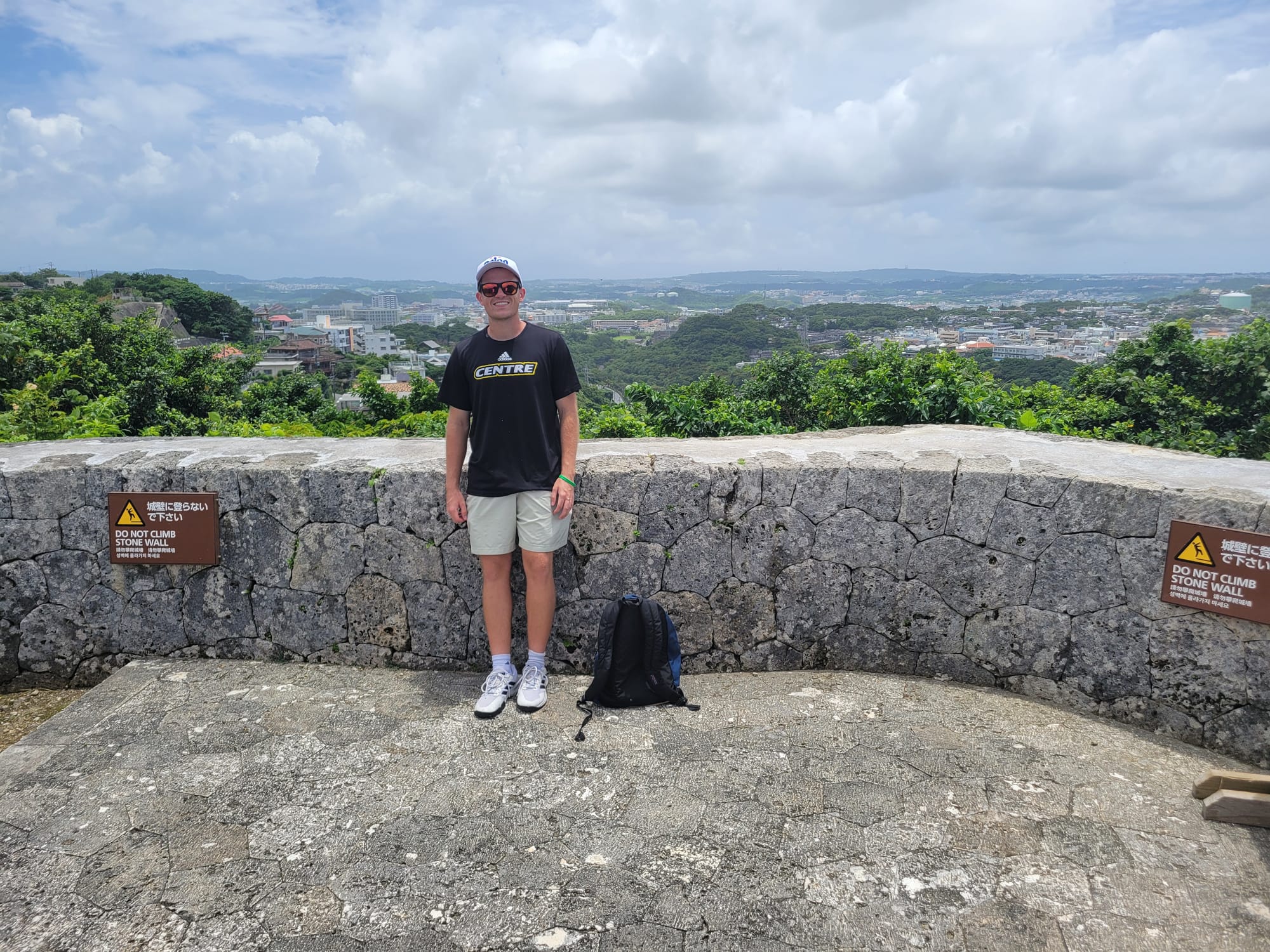
We finished our time in Okinawa with a visit to a karaoke bar near our hotel. It was here that I learned a very effective, yet perhaps slightly dangerous, marketing method for alcohol in Japan. All-you-can-drink liquor, beer, and mixed drinks for an hour and a half. The upfront price was a little steep, so we were quite vested in getting our money's worth. All of us had a great time, and the locals were incredibly friendly – they even tolerated my singing.
Tokyo
We landed in Tokyo and began a new series of challenges. Tokyo is the largest city in the world. I've been to big cities: New York, Shanghai, Beijing, and Istanbul. Tokyo seemed to be on another level. Robert's stomach wasn't in the best place after the night before, and his head was worse as his first bouts of homesickness hit. Combine that with my frustration of acquiring a Suica card, don't travel to Japan without an iPhone, and I didn't feel like fighting him when he wanted McDonald's for dinner. After the disappointing meal, Robert hit the sack, and I decided to hit the sidewalk.
I scoped out the closest of our destinations for the following day, Akihabara. It's colloquially called "Electric Town" and was my choice of visit since it was the only thing left open so late at night. I thought I would be impressed - wowed by the lights, electronics, and knick-knacks. Instead, I felt strange when touring the gigantic Yodobashi store, eight floors each a city block long, filled to the brim with products I couldn't read the labels of. I walked there, took the train back. The only group of people I saw conversing was hanging out under an overpass, sharing cigarettes.
Consumerism Culture - Shibuya Scramble
We set out towards the Imperial Palace on the morning of day five. Our goal was to do a guided tour - the only way to go inside. I foolishly double-backed to our hotel room to grab myself a cap for the day. What I failed to predict was the ensuing elevator ride back down from the 19th floor of the hotel. A whopping 20 minutes passed before Robert and I were able to squeeze onto an elevator that thankfully stopped at our floor to let someone off. This, and our inability to squeeze onto a crowded subway car, resulted in our late arrival at the Imperial Palace, missing the guided tour sign-up. No problem, we can tour the Imperial Gardens, right? Wrong. Because why would the garden be open at the same time as the palace?
Onwards to Shibuya, the shopping and tourism capital of Tokyo! To be completely honest, I'm a bit of a nerd. I played and loved Pokémon when I was younger, and still do. One of my main hobbies is a trading card game called Magic: The Gathering, and I loosely follow trending entertainment news. I was full of expectations for Nintendo Land and the Japanese Pokémon centers, and we were going to be crossing Tokyo's Times Square - The Shibuya Scramble Crossing. Long story short, Shibuya, Nintendo Land, Pokémon centers, Shonen Jump store, they are all impressive and fun... for the first five minutes. After the initial dopamine spikes wear off, the overwhelming crowds and bustle around you make you feel like you've time-traveled to 2019 and are Black Friday shopping at Walmart.
If long lines of people and frantically rushing to pick out items you're interested in – you can't stand and consider because people are waiting for their 10 seconds to look – doesn't bother you, then Shibuya might be right up your alley. But it was not up mine. I still bought souvenirs, even returning towards the end of our trip to do last-minute shopping, but the stores selling experiences in the form of merchandise weren't my favorite part of Japan.
I returned to Electric Town that afternoon, this time accompanied by Robert, and much to my dismay, it felt the same in the daylight as it did in the dark. When we didn't focus on the stores themselves, we found much more pleasure in the experience. We toured an arcade and game store while in Akihabara, as well, and were amazed at the number of people inside. Every machine and table was full, something most U.S. towns haven't witnessed since the 1980s.
A quick stop back at the hotel to drop off our purchases from the day was followed by dinner and an outing to the Tokyo SkyTree. We arrived in the midst of a festival performance occurring at the base of the tower. Locals were gathered, joining in with the traditional dance set to the live music. My favorite part of the entire day was actually the SkyTree area. Not only were we lucky to catch the end of the performance, but there was also a festival on the fourth-floor patio. The festival had food and outdoor eating areas set up, and reminded me of my study abroad in Northern Ireland and Belfast's Christmas market. The main attraction of the SkyTree – a viewing platform hundreds of feet above the ground – was fantastic, too.
I was pleasantly surprised by the ease and speed of getting to the viewing platform. Unlike the Empire State Building in New York, with long elevator waits and a slow elevator ride, the SkyTree's massive elevators moved at high speed, delivering us to the 350th floor in less than a minute. The platforms are fully enclosed – it would be quite cold and dangerous if open-air. And while there is a small, translucent section of floor available to stand on and look through, most of the platform is solid. The view? Stunning. The city never ends. And on a clear day, you're supposedly able to see Mt. Fuji towering in the background.
Expectations Versus Reality
I wanted to outline the first half of my trip to show that our experiences do not always live up to our expectations. And that's okay! For every disappointment, there was a different place that exceeded my expectations. And mistakes can even open up new opportunities. Like when we missed our bus stop, but stumbled across a rural village and a beautiful stream.
The remainder of our trip proceeded in the same fashion. We would rush to accomplish as much in one day as the two of us could handle, and then spend the evening planning tomorrow's excursion. There were ups and downs, as everything in life flows. Closed attractions, surprise festivals, mysterious cemeteries, helpful strangers, massive bowls of ramen, expensive bathroom visits on Mt. Fuji, sold-out stadiums. We had no shortage of excitement, and – honestly – I don't think we could have asked for much more.
What You Should Know
Japan's cities epitomize excitement and opportunity. I left feeling that if something was for sale, you could buy; if there was something you could see, you could see it. But it can also be challenging to distinguish between worthwhile attractions and tourist spots. Go in with a plan, and leave room for travel time greater than the Google Maps estimate. Unless you can navigate Japanese train stations like a local, those estimates aren't for you; they're for people who read Japanese.
Food can be cheap. Convenience store food is very cheap and much better than U.S. equivalents. However, I don't recommend eating it often. Not that it will make you sick, but that's what our group ate a lot of to save on money and time, and I left feeling like I didn't really get to try the local cuisine. Izakayas (bars that sell food) have great food and okay prices, but the portions may be smaller than you expect. Try one of these for dinner at least once and allow yourself to order multiple items.
I mentioned the Suica card once earlier, but I want to reiterate. It is an invaluable time saver to have an iPhone compared to a Western-purchased Android. My entire trip, I never saw another person use a physical card like I had to. Not only will it save you time – seconds saved from fiddling with your wallet or purse – it may also be your only option depending on where you begin your travels from. Due to microchip shortages, it can be difficult to obtain a physical card at all, and I couldn't imagine having to wait in line at a teller window to buy a ticket every single time I wanted to ride a subway or train.
If you plan on climbing Mt. Fuji, do it in two days. It is possible to do it in one; that's how we did it. But it creates a lot of stress with scheduling public transport, assuming you don't have a rental vehicle, and prevents you from seeing a sunrise or sunset from the summit. That second part is tricky, though. Unless you are prepared to monitor the weather diligently and plan most of your trip around the climb, it's nigh impossible to ensure clear weather for sunrise/sunset viewing. For your best chance of good (not cloudy or rainy) weather, avoid traveling during Japan's rainy season. We lucked out; both the day before and day after we climbed, there was terrible viewing weather on the mountain, even raining out entirely one day.
And finally, do not underestimate the language barrier. I expected a good number of people to be somewhat fluent in English and for the average person to speak at a decent level. And while the average person did know far more English than I did Japanese, it was usually impossible to communicate more than the essentials. I will likely not return to Japan without being able to speak and read the language myself, or if I am traveling with Japanese natives. For me, it made the experience much less authentic, and I felt like I did myself and Japan a disservice by not being able to fully partake in their culture.
Oh, and you must attend a baseball game. At Tokyo Dome, if possible.
